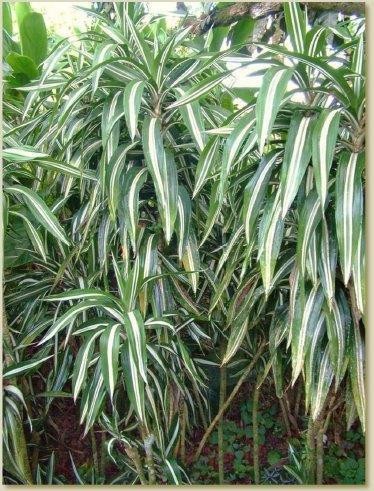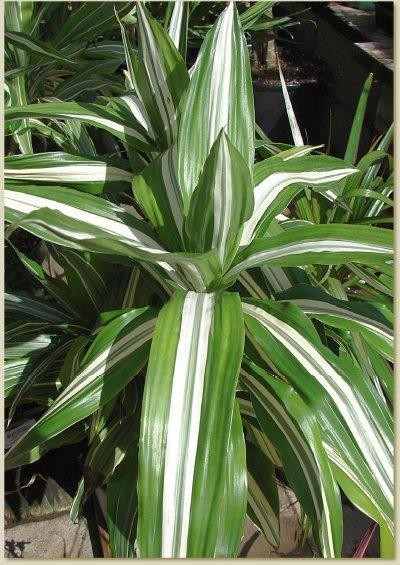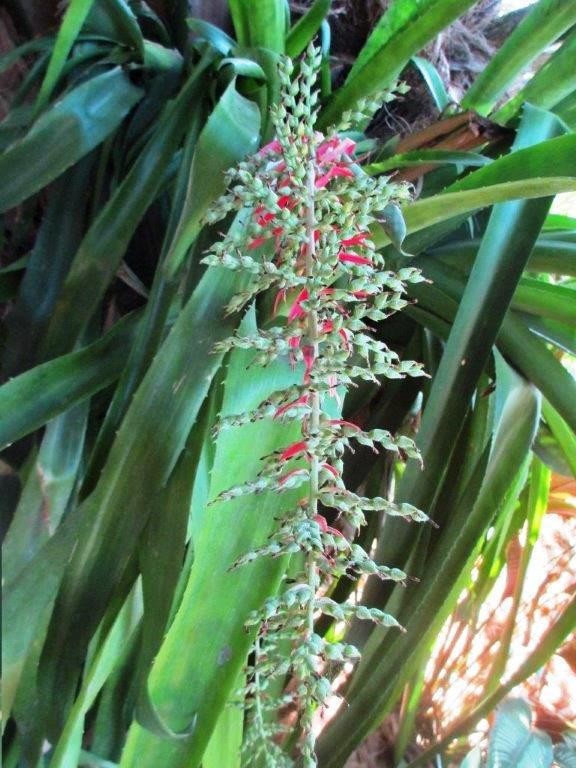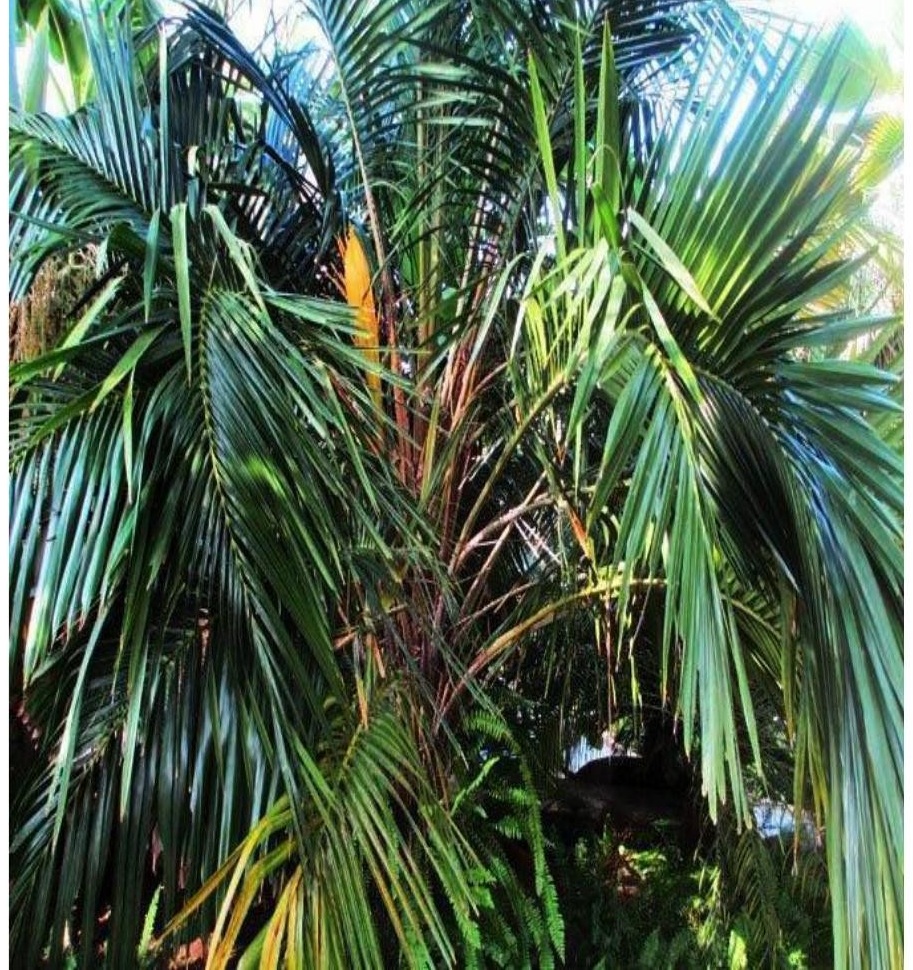By Tommy Clarkson from the March 2018 Edition
Family: Agavaceae
Also known as: Dragon Tree
Dracaena is the Greek word for “female dragon.” In turn, the thickened sap of this plant, supposedly, resembles dragon’s blood. (However, in that it’s been some time since I last slew a dragon and, quite honestly, with all the roaring, flapping of scaly wings and searing fire breath, I have but scant recollection of exactly what its blood looked like!)
But first, let’s discuss the approximately forty varieties of this interesting genus. It is comprised of a variable lot ranging from small, primarily herbaceous perennials to large, woody palms or tree-like plants all from the Old World. They do share the commonality of sword-shaped, often stalkless leaves. As a rule, these usually grow in a spiral from the stem top of the trunk.
Native to tropical West Africa, they (the Striped Dracaena not the earlier-discussed dragon) look and respond best to shadier environs. Hence they work very well indoors.
Additionally, regarding such usage according to NSA researchers this is a great plant for cleaning the air when used as an indoor specimen…. but, I suspect, finding their little tiny, air-purification, vacuum cleaners hidden beneath their leaves is rather difficult!
There are at least seven subspecies, with two main varieties of this plant, generally available to the public: ‘Warneckii’ which features stiff, striped leaves of gray, green, or white, as well as several popular cultivars, including ‘Lemon Lime’; ‘Janet Craig’ which has solid green, flexible leaves; and the smaller ‘Janet Craig Compacta’.

Used in such capacity since at least the mid 19th century, it makes a most striking houseplant. It has a woody, straight, cylindrical trunk and attractive leaves growing to between thirty-nine and over forty-seven inches (99.06 – 119.38 cm). Reaching to fifteen feet or more, it looks much like its kin, the Corn Plant (Dracaena fragrans). Its tiny red on the outside, white within flowers are in linear panicles (branched, elongated inflorescences of stalked leaves). It can be propagated by tip cuttings with its principal pests and diseases including mites, thrips, and chewing insects, while having a sensitivity to leaf spot diseases.
As to the best care for Dracaena deremensis, what follows might be a good beginning:
Water the Striped Dracaena thoroughly with a garden hose after the top two to two and a half inches (6.35 cm) of soil becomes dry. This will allow the moistened foliage to dry before nightfall, preventing fungal diseases. If your plant’s leaf tips turn brown and dry, mist its foliage lightly once per week always in the morning.
They like their food supplements so, every two or three weeks, add one teaspoon of 10-10-10 nitrogen-phosphorous-potassium water soluble fertilizer to one gallon of water, stirring until the fertilizer dissolves completely. Pour the solution onto the soil surrounding the Striped Dracaena at an approximate rate of 1/4 gallon per 2 1/2 square feet.
Being quite drought tolerant, it prefers a more organic-based home but can handle a rather wide variety of soil types. How-ever, it would appreciate it if you’d spread mulch, one inch (2.54 cm) deep, around the plant. Cover the ground starting four inches (10.16 cm) away from the plant’s main stem, ending about a foot (30.48 cm) past the outermost tips of its leaves. Don’t allow the mulch to touch the plant’s stem as this could, potentially, cause rotting problems.

Cut off any yellow/brown, dead or dried out foliage making each cut one-quarter of an inch (.64 cm) above the point where the leaf meets the stem. Prune the plant in this manner every three to four weeks to maintain a healthy appearance and remove dead tissue that can attract insects. In case you’re wondering or someone asks you, leaves/tip browning can be caused by underwatering, lack of humidity, too much direct sun, or if water is chlorinated and used directly from the tap.
Cats that eat the leaves of the Striped Dracaena may mope about, lose their appetite, get sick and vomit sometimes even with blood. (The physiological effect of this plant’s consumption by Musk Ox, Tasmanian Devils and Wombats, however, does not seem clearly researched and validated for some reason!) However, it may all be a moot point in that the Dracaena deremensis is not usually lethal and symptoms should disappear in 12 to 24 hours.

So all’s well that ends well!
Download the full edition or view it online
—
Tommy Clarkson is a bit of a renaissance man. He’s lived and worked in locales as disparate as the 1.2 square mile island of Kwajalein to war-torn Iraq, from aboard he and Patty’s boat berthed out of Sea Bright, NJ to Thailand, Germany, Hawaii and Viet Nam; He’s taught classes and courses on creative writing and mass communications from the elementary grades to graduate level; He’s spoken to a wide array of meetings, conferences and assemblages on topics as varied as Buddhism, strategic marketing and tropical plants; In the latter category he and Patty’s recently book, “The Civilized Jungle” – written for the lay gardener – has been heralded as “the best tropical plant book in the last ten years”; And, according to Trip Advisor, their spectacular tropical creation – Ola Brisa Gardens – is the “Number One Tour destination in Manzanillo”.



